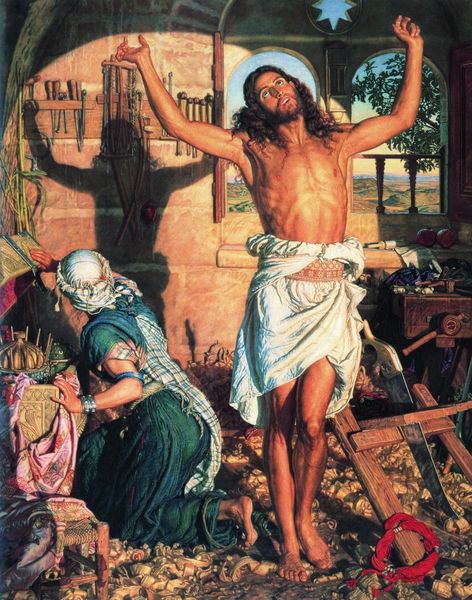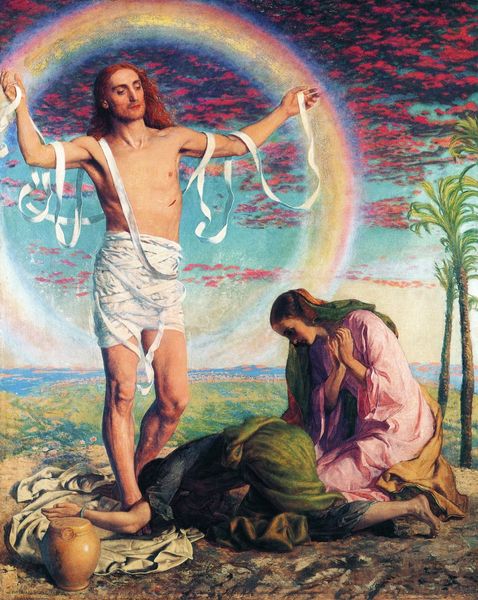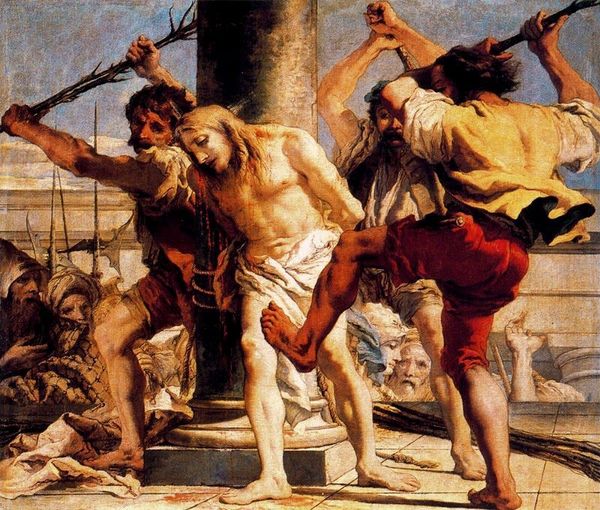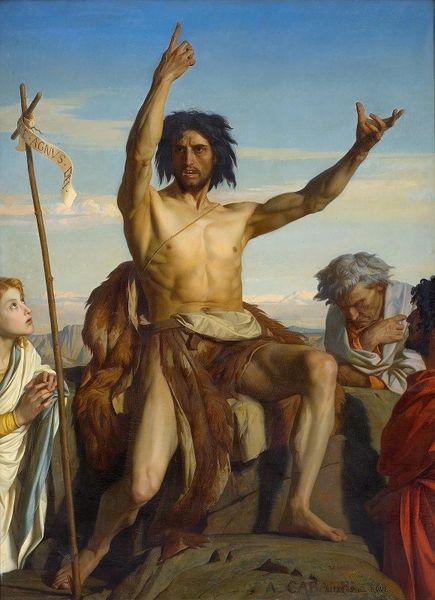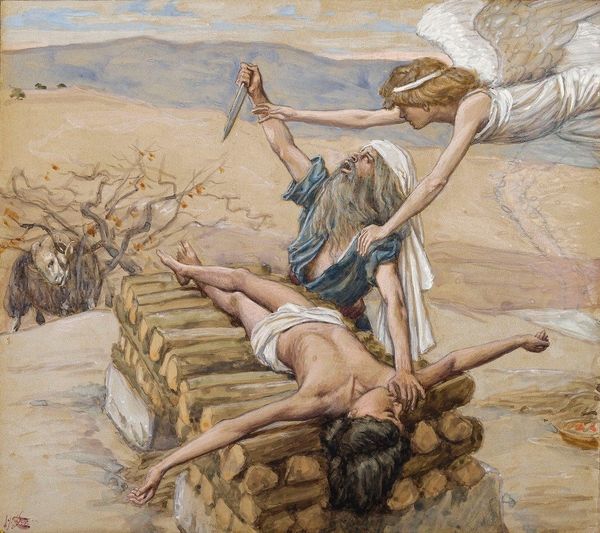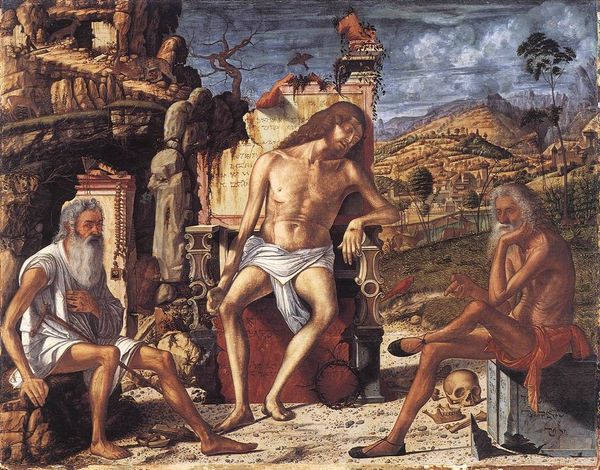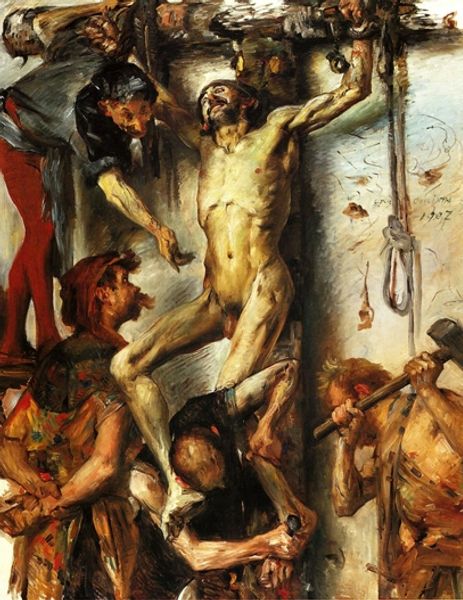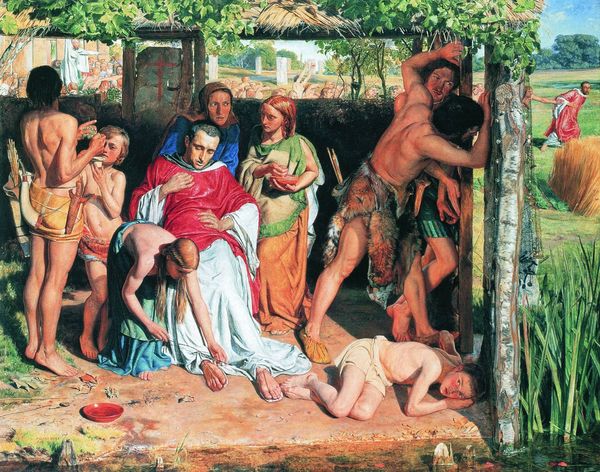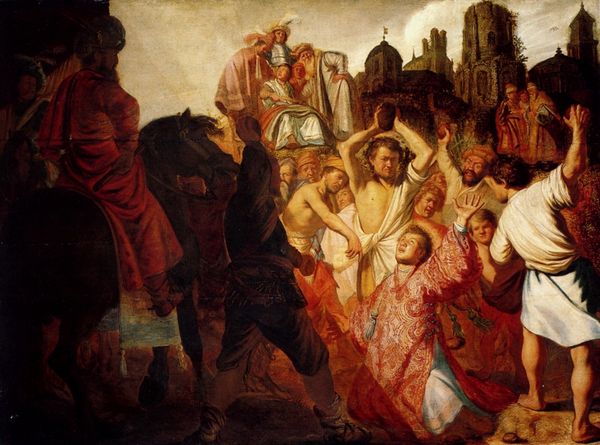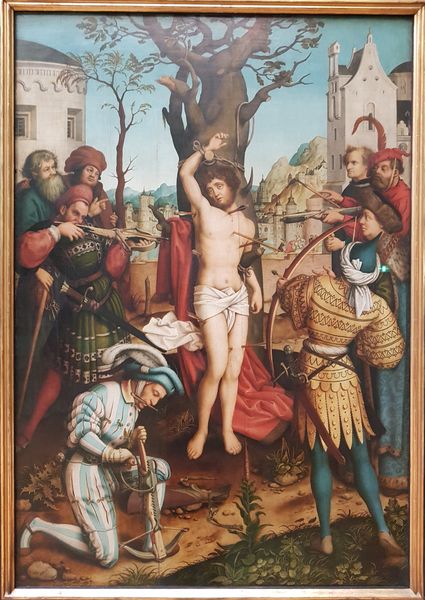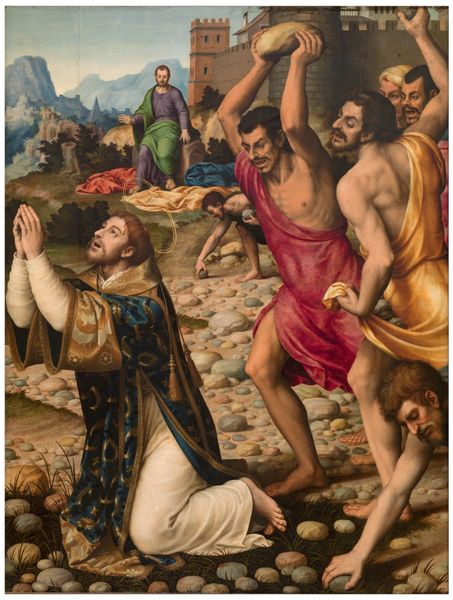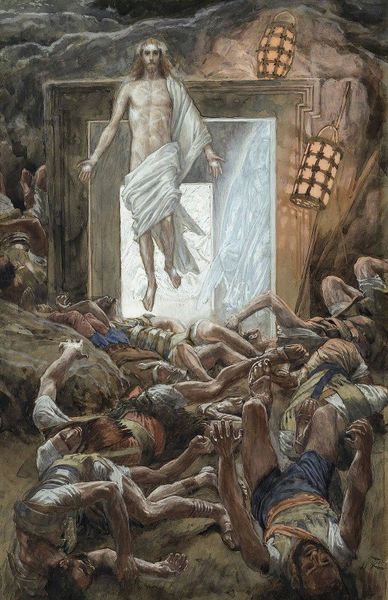
Dimensions: 104.5 x 82 cm (41 x 32 1/4 in.)
Copyright: Public Domain
Curator: Here we have William Holman Hunt’s "The Shadow of Death," an oil on canvas completed between 1873 and 1874, now residing at The Art Institute of Chicago. What are your initial impressions? Editor: There’s a startling juxtaposition here. The dramatic pose and implied crucifixion against the backdrop of what appears to be a humble carpentry workshop… it feels almost theatrical in its presentation of the preordained fate. Curator: Indeed. Hunt was deeply interested in presenting religious narratives with what he saw as historical and archaeological accuracy. He travelled to the Holy Land to study the landscape and local people, imbuing the work with authenticity. The shadows play a key symbolic role, wouldn't you agree? Notice how the shadows cast by Christ's arms evoke the crucifixion. Editor: Yes, that is the focal point but how interesting that Hunt chooses to prefigure this event. Consider that choice, framing a well-known biblical figure in a very particular visual and cultural context. It asks us to rethink conventional, almost iconic representations of this subject, right? Curator: Certainly, he's using the pre-crucifixion scene to comment on the idea of destiny and how it may weigh heavily. There are details within the wood shavings on the floor and carpenter tools in the piece to further enhance a close reading as well, even down to the contents and symbolism of the chest that Mary kneels at in prayer. Editor: The meticulous detail of the shavings speaks to the Pre-Raphaelite movement's focus on accuracy and moral and spiritual ideas being tied to truth to nature. And the theatrical lighting amplifies the drama—it draws the viewer to this moment of what one might call Divine foreshadowing. Curator: The painting clearly reflects the Victorian fascination with religion and morality, but I agree that the intensity is rather compelling as far as use of academic artistic technique, drawing on realistic and romantic style traditions. It uses the conventions to generate strong response and understanding. Editor: And seeing how "The Shadow of Death" positions itself, mediating personal faith with larger historical and artistic contexts gives us insights into Victorian culture and their views toward religiosity in the everyday experience. It also forces a type of narrative on a single panel that isn’t wholly accurate—but definitely compelling. Curator: Considering Hunt’s painstaking approach and commitment to conveying the true idea of what a pre-crucifixion setting looked and felt like, the canvas definitely acts as an intimate portrait loaded with historical understanding, formal visual expression, and faith. Editor: It all really combines to make for such a remarkably thoughtful piece, creating, ultimately, a dialogue between form and its subject.
Comments
No comments
Be the first to comment and join the conversation on the ultimate creative platform.
